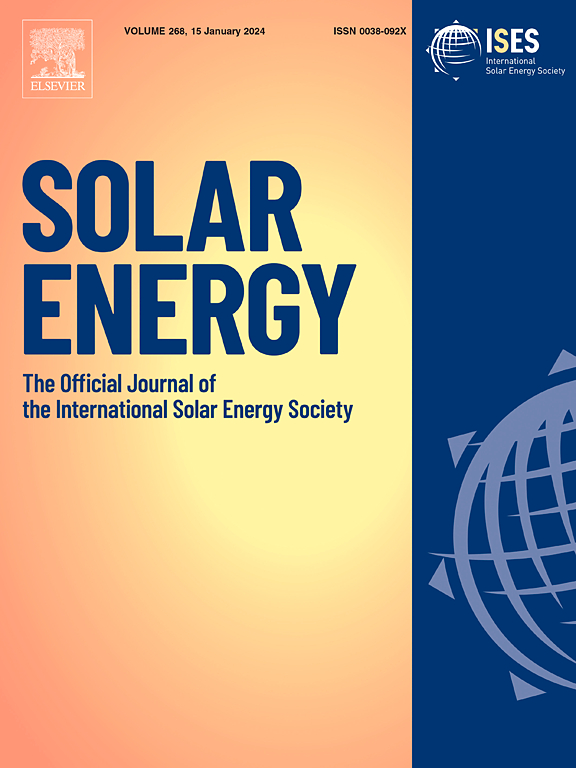Comprehensive assessment of performance and reliability of PERC, TOPCon and SHJ modules in desert climates
IF 6
2区 工程技术
Q2 ENERGY & FUELS
引用次数: 0
Abstract
Tunnel Oxide Passivated Contact (TOPCon) and Silicon Heterojunction (SHJ) solar cells are key technologies in the photovoltaic (PV) market, replacing Passivated Emitter and Rear Cell (PERC) technology which have dominated the market for the past decade. Despite the advancements and rapid market adoption, the performance and reliability of these technologies in the field remain inadequately understood. This study evaluates the performance and reliability of commercial PERC, TOPCon, and SHJ PV modules installed in Qatar’s desert climate for about three years. The modules were assessed indoors and outdoors to evaluate degradation over time, performance ratios and specific energy yield across seasons. During the study period, SHJ modules exhibited the highest degradation, with average decline of up to 8.73% relative. One TOPCon model showed notable degradation, while the other model demonstrated superior stability and the lowest overall degradation. PERC modules experienced significant degradation initially but showed a marked reduction in degradation after the first year, unlike SHJ and the TOPCon modules whose degradation rates persisted over time. Visual inspections revealed significant encapsulant delamination, occurring mostly in the first year in the SHJ modules. Ultraviolet Fluorescence imaging showed signs of severe encapsulant and edge-seal degradation in some of the SHJ and TOPCOn modules. These findings indicate potential for early failure. Performance ratios show that bifacial SHJ and TOPCon modules generally outperform PERC modules. However, a particular model of PERC module exhibited an exceptional performance in the field, suggesting the use of superior materials or manufacturing process. This study highlights the advantages and challenges of advanced PV technologies in harsh climatic conditions, providing valuable insights into their potential for large-scale deployment.
沙漠气候条件下PERC、TOPCon和SHJ模块性能和可靠性的综合评估
隧道氧化物钝化接触(TOPCon)和硅异质结(SHJ)太阳能电池是光伏(PV)市场的关键技术,取代了过去十年主导市场的钝化发射极和后电池(PERC)技术。尽管这些技术取得了进步,市场采用迅速,但这些技术在该领域的性能和可靠性仍然没有得到充分的了解。本研究评估了商用PERC、TOPCon和SHJ光伏组件在卡塔尔沙漠气候中安装的三年左右的性能和可靠性。这些模块在室内和室外进行了评估,以评估随着时间的推移,性能比和不同季节的比能量产量。在研究期间,SHJ模块表现出最大的退化,平均Pmax相对下降高达8.73%。一个TOPCon模型表现出明显的退化,而另一个模型表现出更好的稳定性和最低的总体退化。与SHJ和TOPCon不同的是,PERC模块在一开始会经历明显的降解,但在一年后,降解率会显著降低。目视检查发现了明显的密封剂分层,主要发生在SHJ模块的第一年。紫外荧光成像显示,在一些SHJ和TOPCOn模块中,有严重的封装剂和边缘密封降解的迹象。这些发现表明早期衰竭的可能性。性能比表明,双面SHJ和TOPCon模块总体上优于PERC模块。然而,一种特定型号的PERC模块在该领域表现出优异的性能,这表明使用了更好的材料或制造工艺。这项研究强调了先进光伏技术在恶劣气候条件下的优势和挑战,为其大规模部署的潜力提供了有价值的见解。
本文章由计算机程序翻译,如有差异,请以英文原文为准。
求助全文
约1分钟内获得全文
求助全文
来源期刊

Solar Energy
工程技术-能源与燃料
CiteScore
13.90
自引率
9.00%
发文量
0
审稿时长
47 days
期刊介绍:
Solar Energy welcomes manuscripts presenting information not previously published in journals on any aspect of solar energy research, development, application, measurement or policy. The term "solar energy" in this context includes the indirect uses such as wind energy and biomass
 求助内容:
求助内容: 应助结果提醒方式:
应助结果提醒方式:


